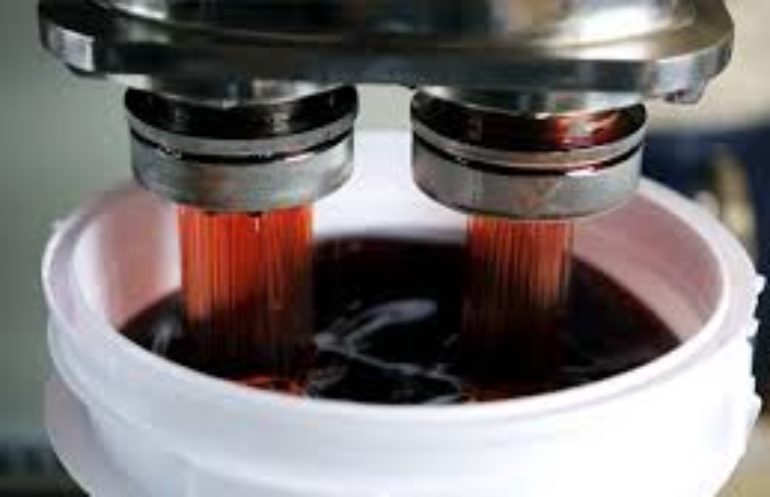"Maximizing Efficiency through Friction Reduction: Tips for a Smooth Operation" for Beginners

Friction Reduction Techniques: A Game-Changer in Industrial Applications
Rubbing is a organic force that happens when two surfaces happen into connect with and relocate relative to each other. While it is an necessary aspect of everyday life, abrasion may also be a major issue in industrial apps. The resistance led to through abrasion can easily lead to raised wear and tear and rip, energy intake, and decreased effectiveness. To deal with these obstacle, various abrasion reduction procedures have been cultivated that are showing to be game-changers in the commercial industry.
One of the very most often utilized approaches for minimizing friction is oiling. Lubes are materials applied between two surfaces to lessen rubbing and use. They develop a slim movie that divides the talking to surface areas, decreasing direct metal-to-metal connect with. This dramatically lowers frictional pressure and permits for smoother action. Additionally, lubricating substances support dissipate heat energy produced through rubbing, additionally enhancing functionality and extending the life expectancy of tools.
Various styles of lubes are accessible for certain apps. Typical mineral oils, synthetic oils, oil, sound lubricants like graphite and molybdenum disulfide (MoS2), and also nanomaterial-based lubricating substances are used relying on aspects such as temperature level variation, lots ability, velocity requirements, and ecological factors to consider.
Yet another reliable procedure for decreasing friction is surface modification. Through changing the area homes of products through procedures such as finishings or treatments, designers may optimize their functionality in terms of reduced frictional resistance. Area layers like plastics or ceramics give a defensive coating that lowers direct connect with between areas while using enhanced resilience.
Surface treatments like nitriding or carburizing affect the chemical make-up of the area layer to develop a solidified level along with improved use resistance. These treatments not only lessen rubbing but likewise boost the load-carrying capacity of parts such as equipments or bearings.
Advancements in nanotechnology have also led to innovative strategy for decreasing rubbing at the atomic degree. Self-assembling monolayers, for example, include the deposition of a single coating of molecules on a area to produce a friction-reducing impact. The exact setup and homes of these molecules permit for enhanced lubrication and reduced rubbing coefficients.

In addition to lubrication and surface modification procedures, appropriate style and component collection participate in crucial jobs in reducing abrasion in industrial functions. Developers have to properly consider variables such as the choice of components, surface area finishes, geometrical tolerances, and operating disorders to reduce frictional reductions.
The make use of of enhanced components along with low coefficients of rubbing can easily dramatically influence efficiency. For circumstances, the introduction of self-lubricating materials like plastics or compounds along with embedded solid lubes has contributed to lowered rubbing in a variety of applications. Furthermore, innovations in tribology analysis have led to better understanding and optimization of interfaces between contacting surfaces, leading in improved performance and endurance.
Friction decrease approaches have far-reaching ramifications throughout multiple markets. In automobile applications, reduced rubbing converts in to improved gas efficiency and lesser emissions. In manufacturing procedures, lowered wear indicates a lot less downtime for routine maintenance and enhanced productivity. Also small improvements in friction decline may lead in significant cost savings over opportunity.
Additionally, as fields try in the direction of sustainability goals, taking on friction reduction techniques may add to electricity conservation initiatives through decreasing electrical power demands. Enhanced horsepower lubricant lessens working costs but additionally promotes ecological conservation.
In final thought, friction reduction techniques are changing industrial functions by boosting performance while minimizing damage and energy consumption. Oiling procedures making use of a variety of types of lubricating substances deliver substantial perks by minimizing direct contact between surface areas. Surface adjustment methods boost performance with coatings or treatments that affect material residential or commercial properties at the area level.
Advancements in nanotechnology make it possible for specific management over atomic-level interactions for enhanced lubrication impacts. Suitable style methods combined with component variety additionally add to reducing frictional reductions across numerous fields.
As technology carries on to evolve quickly, it is essential for industries to take advantage of these game-changing procedures for optimizing performance while steering maintainable methods. Through lowering abrasion, we may lead the means for a extra effective, effective, and eco friendly future.
